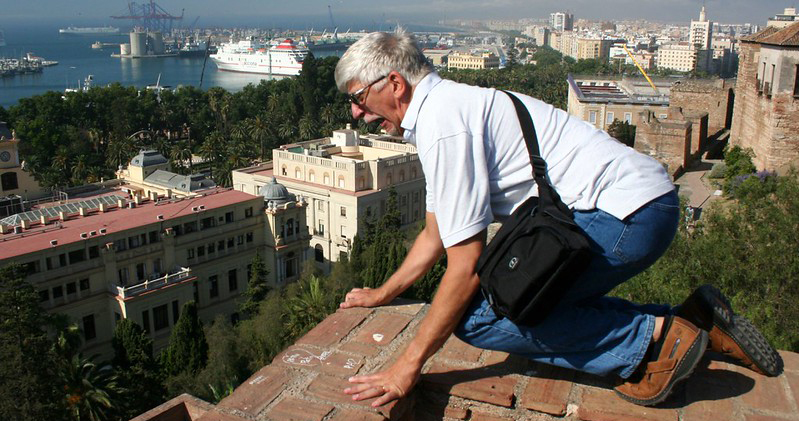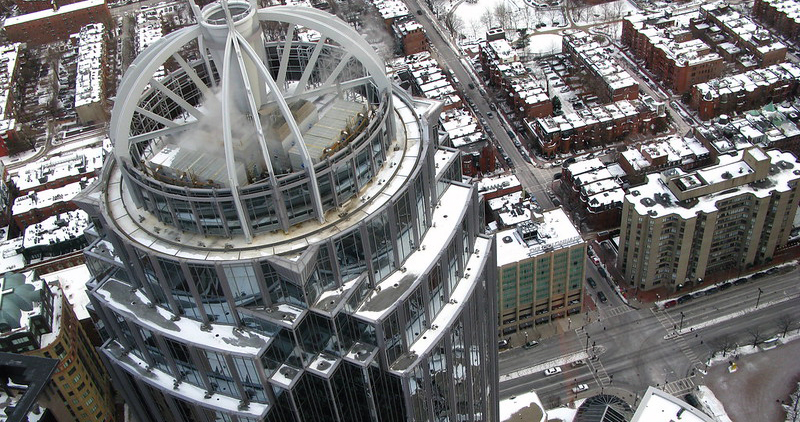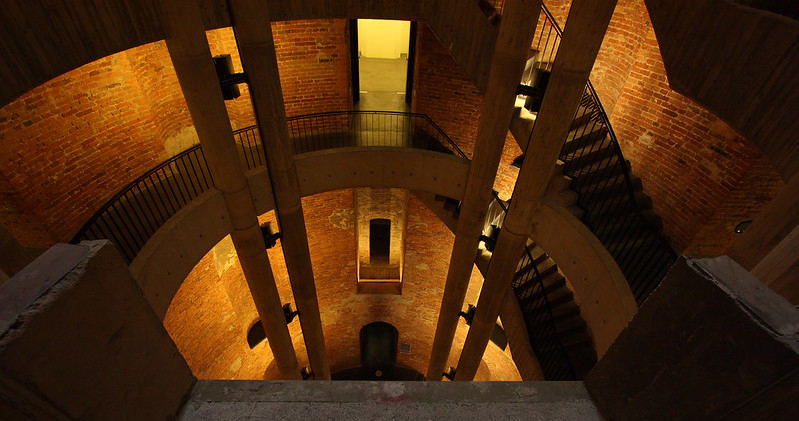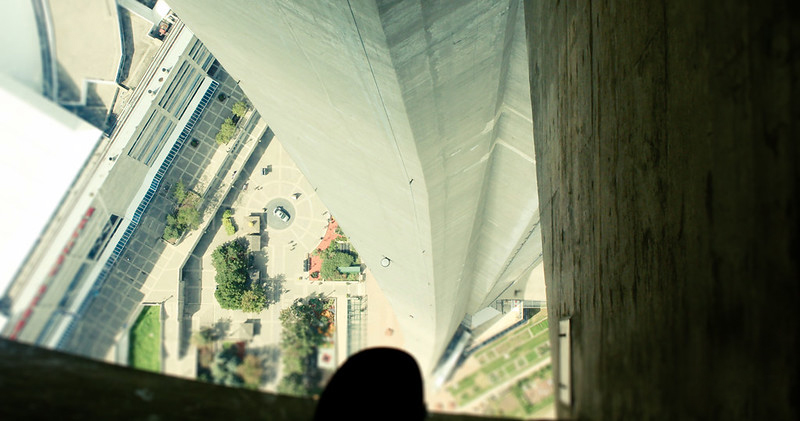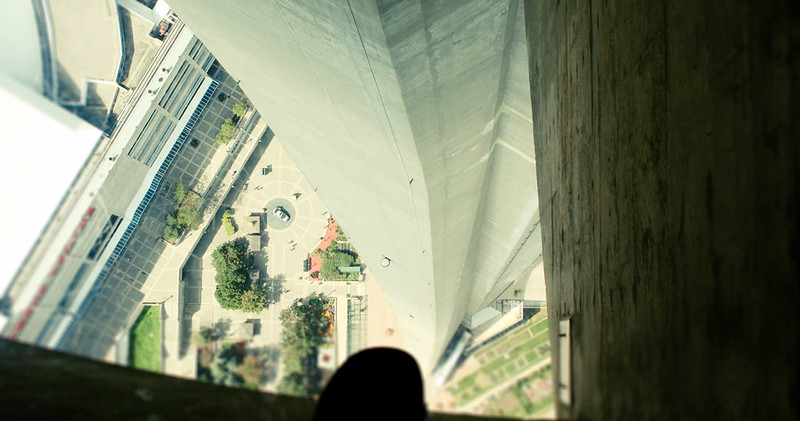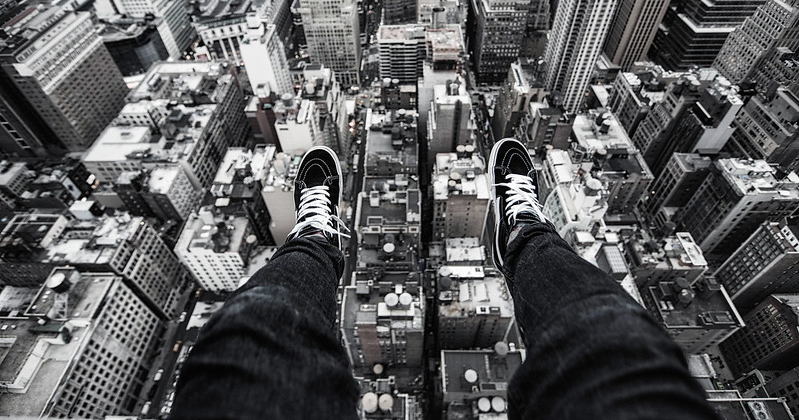| Entro en un ascensor de cristal y me sitúo cerca de la barandilla | |
| Estoy en un ascensor de cristal, colocado cerca de la barandilla, y subimos un piso | |
| Después de un largo viaje en el ascensor metálico que parece de una obra, llegamos a la terraza, y para acceder a ella tengo que pasar por un puente metálico y descubierto | |
| Estoy subiendo en un ascensor de cristal, y cuando estamos por el primer piso se produce una avería, por lo que hay ruido y el ascensor se mueve un poco. Pasan 3 minutos y la avería sigue sin solucionarse | |
| Entro en un ascensor de cristal y me sitúo lejos de la barandilla | |
| Estoy en un ascensor metálico que parece de una obra, colocado cerca de la barandilla, y subimos un piso | |
| Estoy en un ascensor de cristal, colocado lejos de la barandilla, y subimos cuatro pisos | |
| Estoy subiendo en un ascensor de cristal, y cuando estamos por el tercer piso se produce una avería, por lo que hay ruido y el ascensor se mueve un poco. Al cabo de 30 segundos la avería se soluciona y el ascensor sigue. | |
| Estoy en un ascensor de cristal, colocado cerca de la barandilla, y subimos dos pisos | |
| Estoy subiendo en un ascensor metálico que parece de una obra, y cuando estamos por el primer piso se produce una avería, por lo que hay ruido y el ascensor se mueve un poco. Al cabo de 30 segundos la avería se soluciona y el ascensor sigue. | |
| Estoy en un ascensor de cristal, colocado lejos de la barandilla, y subimos tres pisos. | |
| Después de un largo viaje en el ascensor de cristal, llegamos a la terraza, y para acceder a ella tengo que pasar por una pasarela cubierta. | |
| Estoy subiendo en un ascensor metálico que parece de una obra, y cuando estamos llegando arriba del todo del edificio se produce una avería, por lo que hay ruido y el ascensor se mueve un poco. Pasan 3 minutos y la avería sigue sin solucionarse. | |
| Estoy en un ascensor de cristal, colocado lejos de la barandilla, y subimos un piso. | |
| Estoy subiendo en un ascensor de cristal, y cuando estamos llegando arriba del todo del edificio se produce una avería, por lo que hay ruido y el ascensor se mueve un poco. Pasan 3 minutos y la avería sigue sin solucionarse. | |
| Estoy subiendo en un ascensor de cristal, y cuando estamos llegando arriba del todo del edificio se produce una avería, por lo que hay ruido y el ascensor se mueve un poco. Pasan 3 minutos y la avería sigue sin solucionarse. | |
| Estoy en un ascensor de cristal, colocado lejos de la barandilla, y subimos cinco pisos. | |
| Entro en un ascensor metálico que parece de una obra y me sitúo lejos de la barandilla. | |
| Estoy en un ascensor de cristal, colocado cerca de la barandilla, y subimos cinco pisos. | |
| Estoy subiendo en un ascensor metálico que parece de una obra, y cuando estamos llegando arriba del todo del edificio se produce una avería, por lo que hay ruido y el ascensor se mueve un poco. Al cabo de 30 segundos la avería se soluciona y el ascensor sigue. | |
| Estoy en un ascensor metálico que parece de una obra, colocado lejos de la barandilla, y subimos dos pisos | |
| Estoy en un ascensor de cristal, colocado cerca de la barandilla, y subimos cuatro pisos | |
| Estoy subiendo en un ascensor metálico que parece de una obra, y cuando estamos por el tercer piso se produce una avería, por lo que hay ruido y el ascensor se mueve un poco. Al cabo de 30 segundos la avería se soluciona y el ascensor sigue. | |
| Estoy en un ascensor metálico que parece de una obra, colocado cerca de la barandilla, y subimos tres pisos. | |
| Estoy en un ascensor de cristal, colocado cerca de la barandilla, y subimos tres pisos. | |
| Estoy en un ascensor metálico que parece de una obra, colocado lejos de la barandilla, y subimos cinco pisos. | |
| Estoy subiendo en un ascensor metálico que parece de una obra, y cuando estamos por el primer piso se produce una avería, por lo que hay ruido y el ascensor se mueve un poco. Pasan 3 minutos y la avería sigue sin solucionarse. | |
| Estoy en un ascensor metálico que parece de una obra, colocado lejos de la barandilla, y subimos cuatro pisos. | |
| Estoy subiendo en un ascensor de cristal, y cuando estamos por el primer piso se produce una avería, por lo que hay ruido y el ascensor se mueve un poco. Al cabo de 30 segundos la avería se soluciona y el ascensor sigue. | |
| Entro en un ascensor metálico que parece de una obra y me sitúo cerca de la barandilla. | |
| Estoy en un ascensor metálico que parece de una obra, colocado cerca de la barandilla, y subimos cuatro pisos. | |
| Estoy subiendo en un ascensor de cristal, y cuando estamos llegando arriba del todo del edificio se produce una avería, por lo que hay ruido y el ascensor se mueve un poco. Al cabo de 30 segundos la avería se soluciona y el ascensor sigue. | |
| Estoy en un ascensor de cristal, colocado lejos de la barandilla, y subimos dos pisos. | |
| Estoy en un ascensor metálico que parece de una obra, colocado cerca de la barandilla, y subimos cinco pisos. | |
| Estoy en un ascensor metálico que parece de una obra, colocado lejos de la barandilla, y subimos tres pisos. | |
| Estoy subiendo en un ascensor de cristal, y cuando estamos por el tercer piso se produce una avería, por lo que hay ruido y el ascensor se mueve un poco. Pasan 3 minutos y la avería sigue sin solucionarse. | |
| Estoy subiendo en un ascensor metálico que parece de una obra, y cuando estamos por el tercer piso se produce una avería, por lo que hay ruido y el ascensor se mueve un poco. Pasan 3 minutos y la avería sigue sin solucionarse. | |
| Estoy en un ascensor metálico que parece de una obra, colocado cerca de la barandilla, y subimos dos pisos. | |
